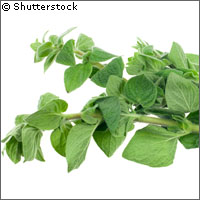Researchers say oregano more than just a flavour enhancer
Oregano has made its way into the hearts, and stomachs, of those who love pungent, perennial herbs. But it's now come under a new spotlight: its ability to treat inflammation. Researchers from Germany and Switzerland have discovered that oregano contains a substance that can bring relief to inflammation, among other disorders. The findings of the study were published in the journal Proceedings of the National Academy of Sciences (PNAS). The researchers, from Bonn University in Germany and the ETH Zürich in Switzerland, administered beta-caryophyllin (E-BCP), oregano's active ingredient, to mice. 'We have used beta-caryophyllin to treat mice with paws swollen due to inflammations,' commented Dr Jürg Gertsch of ETH Zürich. 'In up to 70% of cases the swelling subsequently subsided.' Also interesting is the fact that E-BCP may have the potential to fight other disorders like arteriosclerosis and osteoporosis. Bonn University's Professor Andreas Zimmer, a member of the Life & Brain-Zentrum, said: 'Our results have revealed that beta-caryophyllin inhibits inflammation,' adding: 'Experiments on mice have shown that this substance is also effective against osteoporosis.' E-BCP is found in a myriad of herbs and spices, including black pepper, rosemary and basil. Experts estimate that people can consume up to 200 milligrams of the active ingredient each day. The researchers explained that beta-caryophyllin docks on specific receptor structures in the cell membrane, what experts call the 'cannabinoid-CB2 receptors', and generates a cell behaviour change. They said that the cell's production of substances that might induce inflammation is suppressed, for example. Receptors are the 'locking-docks' for a number of substances; they are the means by which a series of mechanisms are triggered through a 'key-and-lock' effect. On their own, keys and locks are useless, but together, they open doors. In essence, receptors are the biological locks. Another key component of E-BCP is that it does not trigger intoxication, unlike other substances that affect CB2 receptors, the researchers said. According to them, CB2 has a 'brother', the so-called CB1, which is researched extensively by drug scientists. The latter is found in the brain's neurons and some ingredients of plants have the ability to dock in the brain easily, thus increasing the intoxicating effect for people. CB1 and CB2, while different, share similar qualities, and substances that stimulate CB2 create an intoxicating effect. And therein lies the difference: where beta-caryophyllin binds specifically to CB2, it does not bind to CB1. The end result is that a person cannot get high from particular foods, the research team said. The endocannabinoid system, which regulates the probability of neurotransmitter release in a variety of neuronal tissues, consists of both receptors. Researchers are now determining their importance in different disorders. A system that is out of whack can trigger various health problems, like chronic pain and cardiac disease, and memory may even be affected. 'Endocannabinoids are formed by the body itself and maintain its equilibrium,' Professor Zimmer remarked. When an inflammation erupts, the endocannabinoids ensure that the immune system does not 'over react' affecting its defensive reaction. 'The endocannabinoid system comes into play when the equilibrium of the metabolic processes has been destroyed,' Professor Zimmer added. The scientists' findings showed that E-BCP has the potential to form the basis for new drugs. The fact that this active ingredient is commonly found in nature proves to be a valuable asset to pharmacological researchers.
Countries
Switzerland, Germany



